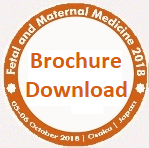Haniyeh Bashizadeh-Fakhar
Shahid Beheshti University of Medical Sciences, Iran
Title: Comparison of serum human epididymis protein carbohydrate antigen 125 (Ca125) and risk of ovarian malignancy algorithm as markers in ovarian cancer: A systematic review and a metaanalysis
Biography
Biography: Haniyeh Bashizadeh-Fakhar
Abstract
Background & Aim: The risks of Ovarian Malignancy Algorithm (ROMA) and Human Epididymis protein 4 (HE4) appear to be the promising predictors of Epithelial Ovarian Cancer (EOC). However, conflicting results have been obtained in the diagnosis process when we compare ROMA, HE4 and CA125.
Method: The databases Medline/PubMed, Embase, Web of Science, Google Scholar, the Cochrane Library and ClinicalTrials.gov and full texts bibliographies were searched for relevant abstracts. EOC predictive value of ROMA was systematically evaluated and the predictive performance of ROMA, HE4 and CA125 were compared within the same population. In this meta-analysis, the pooled sensitivity, pooled specificity, pooled AUC, pooled p-value of each tumor marker as well as pooled number of patients and healthy individuals were calculated.
Result: Based on meta-analysis of 9 studies, the total sample size was obtained, 785 patients and 667 healthy individuals. The overall estimates of ROMA for EOC predicting pre-menopausal women with 95% CI were sensitivity 86.9, specificity 085.52 and 0.9 AUC. ROMA for EOC predicting pre-menopausal women was sensitivity 90, specificity 80.84 and 0.9 AUC. The overall estimates of Ca125 and HE4 for EOC predicting with 95% CI were as follows, sensitivity (84.5 and 80.37), specificity (83.8 and 88.45) and AUC (0.85 and 0.87).
Conclusion: This meta-analysis is highlighted that ROMA can help distinguish EOC from the benign stage in post-menopausal women. ROMA is less specific but more sensitive than HE4. Both ROMA and HE4 are more specific than CA125 for EOC prediction. CA125 has a higher accuracy for diagnosis than HE4 for EOC. ROMA is a good predictor to replace CA125, but its utilization requires further exploration.

